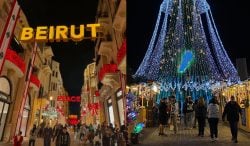Blog
Only 24 Out of 36 Beaches in Lebanon Are Safe to Swim in This Summer
Despite the fact that many of us dream about hopping from beach to beach each summer, we always get quite the reality check when we think of water pollution and quality in Lebanon.
Unfortunately, a recent study conducted by the National Council for Scientific Research revealed that a sizable chunk of these beaches are unsafe for swimming. Here are the beaches that topped the list.
So, where is it safe to swim along the Lebanese coast this summer?
According to the National Council for Scientific Research’s (CNRS) annual report, 24 points only are considered safe for swimming this summer. These locations include Tyre, Al-Naqoura, Batroun, Bahsa, Jbeil (2 beaches), Anfeh and Deir al-Natour beaches, Fidar, Okaibeh, Menieh near the municipal stadium in Tripoli, Damour, Maamaltein, Nahr Ibrahim, Tabarja, Ain el Mraysseh between the fishing port and Riviera, Tripoli, and Tabarja.
All these beaches, especially Batroun and Naqoura coasts, are considered the cleanest site measured as of date, which means they are safe for swimming.
On the other hand, Ramlet el-Baida, Chekka-Selaata, Manara, Dabayeh Marina, Antelias, Tripoli, and Qal’at Akkar are all deemed unsafe after they exceeded the maximum bacteria levels over the year and where experts recorded dangerous chemical pollution.
There are also some beach locations that were labeled “caution” to “critical,” including Heri beach, contaminated with bacteria and probably also chemicals, Rmeileh, Deir el-Makhalles, the public beach in Saida, Sidon, and Sarafand.
Many environmental warriors and organizations have been tirelessly expressing concern over the fuel pollution and widespread plastics that remain an ongoing threat to marine life and water quality. Our beaches are also witnessing more alerts each year as pollution from excess stormwater carries bacteria, fertilizers, and waste into our precious coastal waters, leaving water unsafe for swimming.
There’s not a “better tomorrow” without our beaches, preserve these special places for generations to come.
Click here to access the full report.
Unfortunately, a recent study conducted by the National Council for Scientific Research revealed that a sizable chunk of these beaches are unsafe for swimming. Here are the beaches that topped the list.
Lebanon’s yearly report on coastal pollution is out:
— Timour Azhari (@timourazhari) July 5, 2021
-24 sites ok for swimming
-8 very polluted
Jbeil, Anfeh, Sur and Naqoura are the best options pic.twitter.com/K01dtYxheo
So, where is it safe to swim along the Lebanese coast this summer?
According to the National Council for Scientific Research’s (CNRS) annual report, 24 points only are considered safe for swimming this summer. These locations include Tyre, Al-Naqoura, Batroun, Bahsa, Jbeil (2 beaches), Anfeh and Deir al-Natour beaches, Fidar, Okaibeh, Menieh near the municipal stadium in Tripoli, Damour, Maamaltein, Nahr Ibrahim, Tabarja, Ain el Mraysseh between the fishing port and Riviera, Tripoli, and Tabarja.
All these beaches, especially Batroun and Naqoura coasts, are considered the cleanest site measured as of date, which means they are safe for swimming.
On the other hand, Ramlet el-Baida, Chekka-Selaata, Manara, Dabayeh Marina, Antelias, Tripoli, and Qal’at Akkar are all deemed unsafe after they exceeded the maximum bacteria levels over the year and where experts recorded dangerous chemical pollution.
There are also some beach locations that were labeled “caution” to “critical,” including Heri beach, contaminated with bacteria and probably also chemicals, Rmeileh, Deir el-Makhalles, the public beach in Saida, Sidon, and Sarafand.
Many environmental warriors and organizations have been tirelessly expressing concern over the fuel pollution and widespread plastics that remain an ongoing threat to marine life and water quality. Our beaches are also witnessing more alerts each year as pollution from excess stormwater carries bacteria, fertilizers, and waste into our precious coastal waters, leaving water unsafe for swimming.
There’s not a “better tomorrow” without our beaches, preserve these special places for generations to come.
Click here to access the full report.





